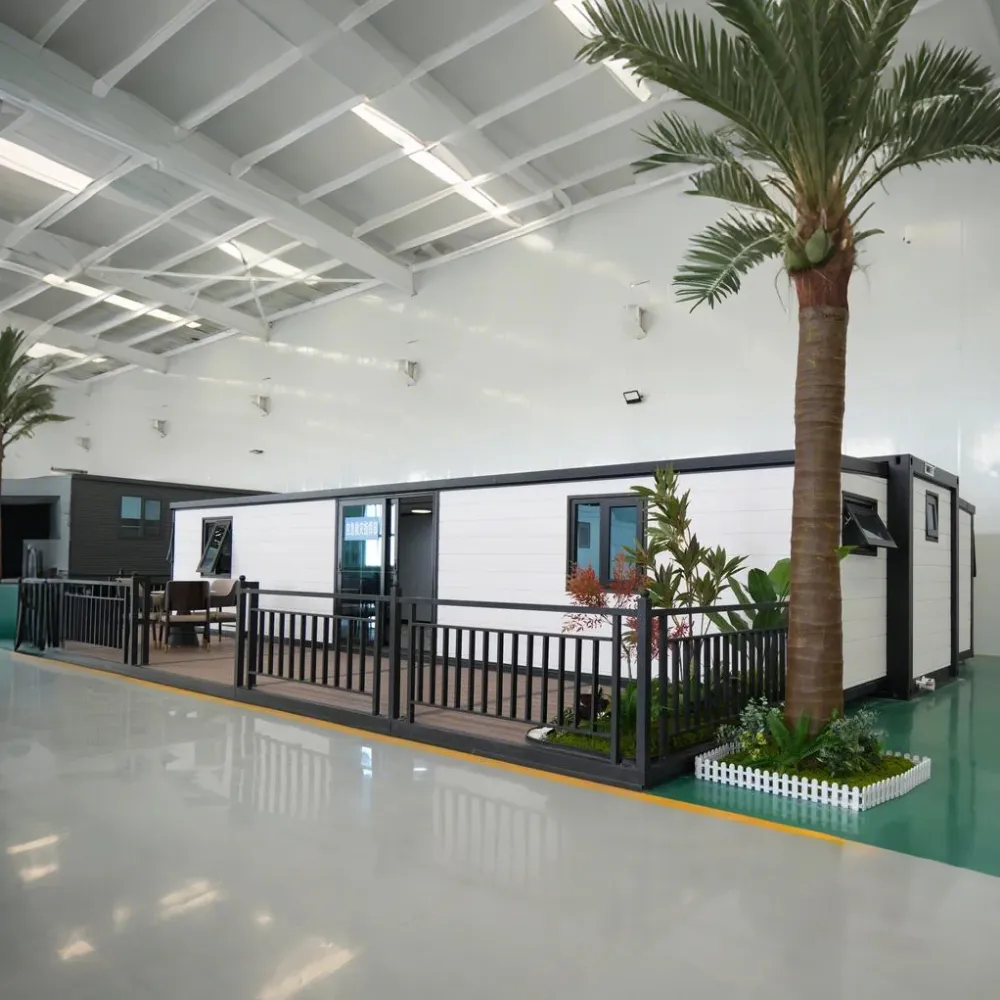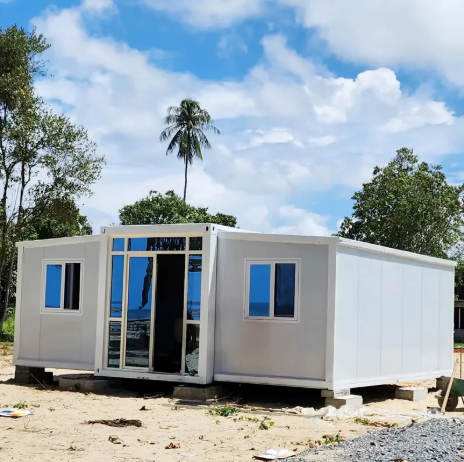Trasforma il Tuo Spazio Abitativo con una Casa Portatile Personalizzata Casa
Il concetto di abitazione portatile ha rivoluzionato il modo in cui pensiamo alla proprietà della casa e agli spazi abitativi. Una casa portatile offre opzioni di flessibilità e personalizzazione senza precedenti, permettendoti di creare un ambiente domestico perfettamente adatto al tuo stile di vita. Che tu stia riducendo le dimensioni, cerchi mobilità o desideri semplicemente una soluzione abitativa originale, personalizzare una casa mobile può trasformare la casa dei tuoi sogni in realtà.
Le case mobili odierne sono ben lontane dalle strutture semplici e standardizzate del passato. I moderni progetti di case mobili integrano tecnologie innovative, materiali sostenibili e soluzioni creative che competono con le abitazioni tradizionali sia per comfort che per stile. La chiave sta nel comprendere le proprie esigenze e sapere come personalizzare ogni aspetto per soddisfarle.
Elementi essenziali di design per la tua casa mobile
Layout e pianificazione degli spazi
La base di qualsiasi personalizzazione efficace di una casa mobile inizia da una pianificazione accurata del layout. Considera come utilizzerai ogni ambiente e quali attività dovranno essere ospitate. I design a pianta aperta possono far sembrare più spaziosa una casa mobile, mentre soluzioni intelligenti per lo stoccaggio aiutano a sfruttare al massimo ogni centimetro quadrato. Pensa a inserire mobili multifunzionali e stanze che possano svolgere funzioni diverse durante la giornata.
Quando pianifichi la disposizione, tieni conto delle fonti di luce naturale e dei percorsi di transito. Posiziona le finestre in modo strategico per creare spazi luminosi e accoglienti e assicurati che porte e passaggi siano abbastanza larghi per un agevole movimento. Ricorda che in una casa portatile, ogni decisione progettuale deve coniugare estetica e funzionalità.
Selezione dei Materiali e Finiture
I materiali che scegli per la tua casa portatile influiscono notevolmente sia sull'aspetto sia sulle prestazioni. Opta per materiali leggeri ma resistenti, in grado di sopportare il trasporto e diverse condizioni atmosferiche. Compositi moderni, prodotti in legno ingegnerizzato e materiali isolanti avanzati offrono un'elevata durata mantenendo il peso della struttura sotto controllo.
Valuta opzioni sostenibili ed ecologiche come pavimenti in bambù, materiali riciclati o finiture a basso contenuto di COV. Queste scelte non solo beneficiano l'ambiente, ma spesso garantiscono una migliore qualità dell'aria interna e una maggiore durata nel tempo. Ricorda di scegliere materiali che si integrino armonicamente dal punto di vista estetico, rispondendo al contempo alle tue esigenze pratiche.
Sistemi e Infrastrutture Funzionali
Energia e servizi pubblici
Una casa portatile ben progettata dovrebbe includere sistemi efficienti per energia, acqua e controllo del clima. Pannelli solari e sistemi di accumulo con batterie possono garantire indipendenza energetica, mentre elettrodomestici efficienti aiutano a ridurre i consumi. Valuta l'installazione di un sistema domotico per monitorare e controllare a distanza le diverse funzioni.
I sistemi idrici richiedono una pianificazione accurata in una casa portatile. Le opzioni disponibili includono collegamenti all'acquedotto comunale, serbatoi d'acqua integrati e sistemi di filtrazione. Alcuni proprietari di case mobili optano per toilette a compostaggio e sistemi per il riutilizzo delle acque grigie, per ridurre l'impatto ambientale e aumentare l'autosufficienza.
Soluzioni per il Controllo del Clima
Mantenere temperature confortevoli nella tua casa portatile richiede una pianificazione accurata. Isolamento di alta qualità, finestre a doppi vetri e adeguati sistemi di ventilazione sono essenziali. Valuta l'installazione di sistemi HVAC split a pompa di calore, che offrono un riscaldamento e un raffreddamento efficienti occupando uno spazio minimo.
La collocazione strategica di finestre e porte può favorire la circolazione naturale dell'aria, riducendo la necessità di raffreddamento meccanico. L'aggiunta di tende da sole o schermature esterne regolabili aiuta a gestire l'irraggiamento solare durante le diverse stagioni.

Design d'interni e tocchi personali
Soluzioni di archiviazione
Un sistema di archiviazione efficace è fondamentale in una casa portatile. Armadietti integrati, spazi di stoccaggio sotto il letto e sistemi di immagazzinamento verticali aiutano a massimizzare l'utilizzo dello spazio. Considera mobili con scomparti nascosti o con funzioni multiple. Soluzioni a parete o di stoccaggio a soffitto possono sfruttare spazi altrimenti inutilizzati.
Le soluzioni di archiviazione su misura devono rispecchiare le tue esigenze specifiche e il tuo stile di vita. Se lavori da casa, includi un'area dedicata che possa essere facilmente nascosta quando non utilizzata. Per gli appassionati di attività all'aperto, crea spazi di archiviazione specializzati per attrezzature ed equipaggiamenti.
Elementi estetici
Il design estetico della tua casa portatile deve rispecchiare il tuo stile personale mantenendo la funzionalità. Scegli una palette di colori coerente che renda gli ambienti più ampi e connessi. I colori chiari in genere funzionano bene negli spazi ridotti, ma non aver paura di aggiungere tocchi audaci per dare personalità.
L'illuminazione svolge un ruolo fondamentale nell'ambiente e nella funzionalità del tuo spazio. Combina diversi tipi di illuminazione – generale, d'uso specifico e decorativa – per creare schemi luminosi flessibili. Valuta l'installazione di dimmer e sistemi di controllo intelligente della luce per una maggiore versatilità.
Integrazione degli spazi esterni
Spazi espandibili
Molti design di case portatili possono includere caratteristiche espandibili come terrazze richiudibili, tende parasole retrattili o sezioni scorrevoli. Questi elementi aumentano efficacemente lo spazio abitativo quando la casa è ferma, mantenendo nel contempo la portabilità quando necessario. Valuta come questi elementi si integreranno con gli spazi interni e con l'estetica generale del progetto.
Creare una transizione fluida tra spazi interni ed esterni può far sembrare la tua casa portatile più spaziosa e in armonia con l'ambiente circostante. Porte vetrate ampie, soluzioni per cucine all'aperto e aree salotto confortevoli aiutano ad estendere lo spazio abitativo oltre la struttura fisica.
Domande frequenti
Quali sono i fattori più importanti da considerare quando si personalizza una casa portatile?
I fattori principali includono le esigenze del tuo stile di vita, le condizioni climatiche locali, la frequenza prevista di mobilità, i vincoli di budget e i codici edilizi o le normative locali. Considera come utilizzerai lo spazio quotidianamente e quali caratteristiche sono più importanti per il tuo comfort e funzionalità.
Quanto costa in genere personalizzare una casa portatile?
I costi di personalizzazione possono variare notevolmente a seconda dell'entità delle modifiche, dei materiali scelti e dei costi della manodopera nella tua zona. Le personalizzazioni di base potrebbero partire da qualche migliaio di dollari, mentre quelle più estese possono oscillare tra i 20.000 e i 50.000 dollari o più. È importante definire un budget chiaro e dare la priorità alle modifiche che offrono il maggior valore per le tue esigenze specifiche.
Una casa portatile può essere comoda quanto una casa tradizionale?
Assolutamente! Con una pianificazione adeguata e dotazioni moderne, una casa portatile può offrire tutti i comfort di una casa tradizionale. Isolamento avanzato, sistemi di climatizzazione, elettrodomestici di dimensioni standard e soluzioni progettuali intelligenti garantiscono che le case portatili possano fornire spazi abitativi confortevoli ed eleganti, che raggiungono o superano il livello di comfort delle abitazioni convenzionali.

